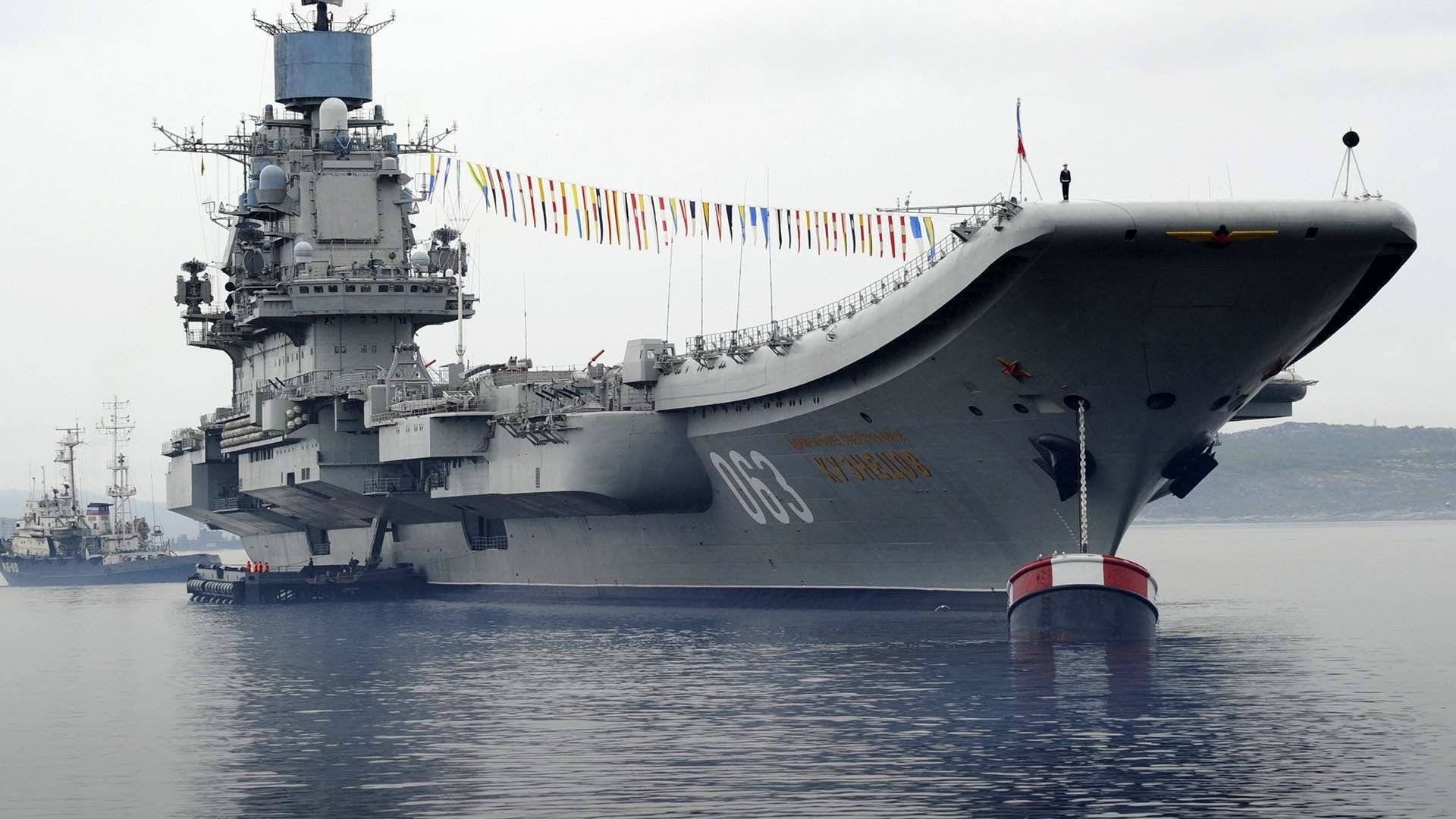While Putin Calls for More Aircraft Carriers, the Admiral Kuznetsov Suffers in Drydock – Despite the stated plans of the Kremlin to build more aircraft carriers, Russia has struggled to maintain and repair its one remaining aircraft carrier – the Admiral Kuznetsov. Itself a relic of the twilight years of the Cold War, the Admiral Kuznetsov has proven to be unreliable even in the best of times, which does not bode well for Russia’s wishes to build up a powerful, world-class fleet of aircraft carriers.
Basics of the Admiral Kuztensov
With its full name being Admiral Flota Sovetskogo Soyuza Kuznetsov, the aircraft carrier is named after Nikolai Kuznetsov, who was an Admiral of the Fleet of the Soviet Union and was the head of the Soviet Navy during the Second World War.
The Admiral Kuznetsov was laid down in 1982, and launched in 1985 before joining the fleet in 1990. Since then, it has only taken part in one long-range combat mission, which was to provide air support to the regime of Bashar al-Assad in Syria in 2016 and 2017. With many issues related to its propulsion system, piping, and crew living conditions, Admiral Kuznetsov was practically always accompanied by a tugboat to assist the vessel if it broke down at sea.
Ongoing Repairs of the Admiral Kuznetsov
Plans to put the Admiral Kuznetsov in for repairs in 2017 were hampered from the start by a 50% cut to the 50 billion ruble ($866 million in 2017) budget allocated to a wide-ranging refit project, which reportedly includes the replacement or refurbishment of the vessel’s boilers, the replacement of the flight deck, enlargement of the hangar, an overhaul of ship’s air defenses, and a removal of the ship’s P-700 Granit anti-ship missiles. Large accidents in the form of a deadly 2018 sinking of the PD-50 floating dry dock repairing the Admiral Kuznetsov as well as a fire on the ship triggered by the explosion of a power cable presented significant setbacks in the vessel’s refit process. In June, Russian state media announced that defects discovered on the ship would cause its return to service to be delayed to 2024. As of July, Russian sources claimed that work was being done on the Admiral Kuznetsov in drydock.
Future of Aircraft Carriers in the Russian Fleet
Once upon a time, Admiral Kuznetsov was not the only aircraft carrier in its fleet. The four examples of the Project 1143 Krechyet (Kiev class) aircraft carrier and the two of the earlier Project 1123 Kondor (Moskva-class) helicopter carriers were built before Admiral Kuznetsov, and served alongside it during the twilight years of the Soviet Union. However, as budgetary constraints ate into the financial and material resources available to the Soviet Navy, maintaining such a fleet become unfeasible, and the excess carriers were decommissioned or sold off quickly following the collapse of the Soviet Union.
Nonetheless, Moscow’s interest in building a new aircraft carrier refuses to wane. The Russian ministry of defense and elements of its military-industrial complex have not kept their examination of the question of building new aircraft carriers a secret. Russia’s new naval doctrine, signed by President Vladimir Putin on July 31, calls for Russia to construct new aircraft carriers as part of a wider pushback against supposed U.S. domination of what Russia refers to as the “world ocean.” This requirement, combined with the document’s stated need for Russia to acquire access to a network of naval bases around the world, appears to signal that Russia desires the ability to project force around the world.
Despite Russia’s lofty stated goals surrounding the future development of its aircraft carrier fleet, naval budgetary constraints stemming from interservice competition as well as structural issues in its state-run shipbuilding enterprise would place these plans in jeopardy even if Admiral Kuznetsov’s repairs were preceding according to plan. If Russia were to try to complement the Admiral Kuznetsov with additional aircraft carriers, it would need to find the shipbuilding capability of its own to build them, as the Admiral Kuznetsov and its Soviet cousins were built in the Mykolaiv shipyard in Ukraine, which remains under Ukraine’s firm control.
Wesley Culp is a Research Fellow at the Center for the Study of the Presidency and Congress. He regularly writes on Russian and Eurasian leadership and national security topics and has been published in The Hill as well as in the Diplomatic Courier. He can be found on Twitter @WesleyJCulp.

